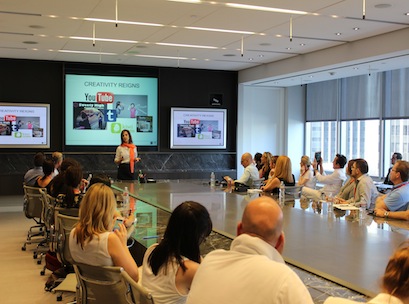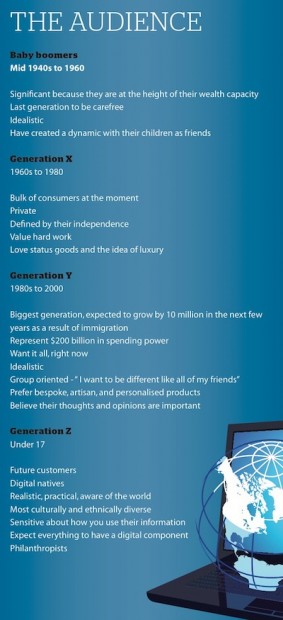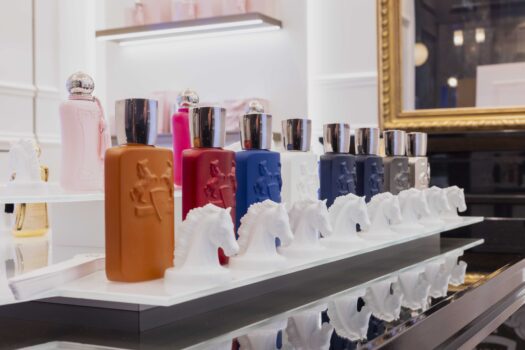 Debunking the behaviours of customers and being able to predict their movements in order to provide the products, service, and experience they want is a difficult task for all retailers, large and small.
Debunking the behaviours of customers and being able to predict their movements in order to provide the products, service, and experience they want is a difficult task for all retailers, large and small.
So the Westfield World Retail Study Tour was held captive by a presentation by Intelligence Group’s chief of strategy, Jamie Gutfreund, in Los Angeles, which provided not just a snapshot of the audience retailers are speaking to, but some key trends for retailers to tap into.
Technology and its prominence in retail moving forward emerged as crucial to connecting with the younger generations of customers beginning to filter through.
“Part of the challenge for brands is how to have a relationship with a consumer who has access Jamie Gutfreund presents to the group to so many choices,” Gutfreund explained to the group.
“The implication is, if you make it, they will come.
“This is something a lot of brands are starting to figure out – to give consumers the opportunity to participate with the brand so the relationship is not just ‘you make the product, I buy the product’.
“We talk about brands as being BFFs, and that means Brand Friend Forever, so you have to find ways that you can fill the relationship with your audience, and that is going to make the big difference between a brand that makes a relationship and a brand that just sells,” she said.
Although the Intelligence Group’s findings are largely based on the US market, the majority of its research remains relevant and pertinent to Australia as well.
Brand me
“What we hear about all the time is global technology and how great it is and how it’s going to change retail and is so fantastic,” said Gutfreund.
“The paradox is, that despite the fact that consumers always have their phone in their hands, it’s never been easier to reach consumers, but it’s never been harder to engage them and to have them care about your brand.”
According to research by Gutfreund and the Intelligence Group, there are more than 90 million people in the US under the age of 35, all of which care far more for their personal brand – brand me – than they do about your retail brand or product.
“They only care about the brands and the companies that are in service to their personal brand,” she says.
“They are not going to share content with their friends and family about any company unless they think it reflect well on them.
Innovation
One of the things many retailers report as holding back their innovation is the expense involved. But as Gutfreund points out,“you can get ROI a lot faster when you do something that is creative”.
“One of the most effective ays to build a relationship with customers is to demonstrate you are innovative,” she says.
“A lot of bricks and mortar retailers have not evolved, and a few brands have a formula that has worked for them so long that they have now become formulaic.
“It’s boring and there is no real reason for the consumer to continually go into these stores. So finding a way to demonstrate your brand is innovative is key.”
Relationships
Understanding the consumer relationship makes a big difference to how a brand is perceived among an audience.
“This is an area where it can be very expensive not to do it,” Gutfreund cautioned the Westfield World Retail Study Tour.
“We did a study for Victoria’s Secret and one of the things we heard from consumers is it’s great that they spend money on their fashion show and marketing, but when they go into stores, they find the service is terrible so they walk out without spending anything,” she said.
“Right now consumers want an answer within 30 minutes. If they are unhappy, they go to Twitter and they want a response.”
An example of innovation within customer service can be found in Warby Parker, a predominantly online optical retailer owned by Toms.
“Warby Parker realised they were spending so much money on customer service, so they filmed their frequently asked questions and put them up on YouTube, cutting down on some of their customer service requirements.”
Digital to physical
It’s not enough to have a digital presence. The two must operate as one, working together, or risk damaging the brand.
“There is a new set of expectations. Every moment is a purchasing moment and multi- channel means that all those things have to work together.
“If you’ve got e-commerce, mobile, and instore, all those things have to be consistent because Gen Y is never disconnected.
“What we hear is that there is a promotion online and when they walk into the store and there is no promotion, and it doesn’t translate – there is no mention of a campaign on one of the other channels.
“That is very jarring in this omni-channel world for Gen Y people.
“The other issue is sales people in a store that don’t know about the promotion online – that’s worse because it feels like you’re a brand that doesn’t understand how Gen Y is constantly connected and how those channels interact with each other on a regular basis.
This story originally appeared in Inside Retail Magazine’s August/September 2013 edition as part of our exclusive coverage on the 2013 Westfield World Retail Study Tour.
Inside Retail Magazine’s December/January 2014 issue, featuring Inside Retail Magazine’s annual Shopping Centre Developments Guid is available now. For more information, click here.






